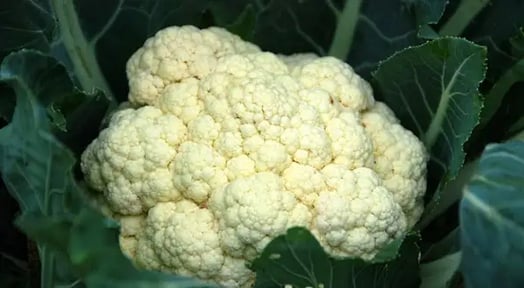It’s bland. It stinks when cut and cooked. And it’s now the hottest commodity in the produce aisle.

It’s cauliflower, baby. US sales of raw cauliflower and cauliflower-adjacent foods hit $700m last year, up almost 40% from 2016.
Why? Low-carb diets have cauli-powerful appeal
Cauliflower is the veggie equivalent of a blank canvas, and it’s low in carbs. So many amateur chefs are getting keto-curious that cauliflower items could fill an entire grocery aisle. There’s:
- Cauliflower rice. (Ever wanted to STAB YOUR DAMN CUTTING BOARD because your knife sent freakin’ cauli crumbs everywhere? No wonder the bagged stuff is popular.)
- Cauliflower crust. (A picky pie-lover’s delight or a crime against , depending on your POV.)
- Actual cauli-flour. (Do. Not. Want.)
- “Hidden” cauliflower smoothies. (You can hide the cauliflower, but you can’t hide the shame.)
- Cauliflower ear. (Wait, no, that’s a wrestling injury.)
The trend is so strong that entire companies have popped up around the booming demand. You can declare your love of cauli-zza by wearing it on your chest, or join a curious campaign to create the caul-emoji.
Chipotle’s CEO said recently that the fast-food chain wants to make “the world’s greatest cauliflower rice.”
Caul it the ‘flower’s edge
Occasional shortages have sent the price of a head skyrocketing, but farmers say cauliflower takes far less time to grow than other veggies, like tomatoes or peppers (about a month, vs. 70-100 days).
Cauliflower is even starting to sprout into Super Bowl-munchies territory. One pizza chain in the Northeast told The Wall Street Journal that cauliflower-crust pizzas account for 25% of all its pie sales.

